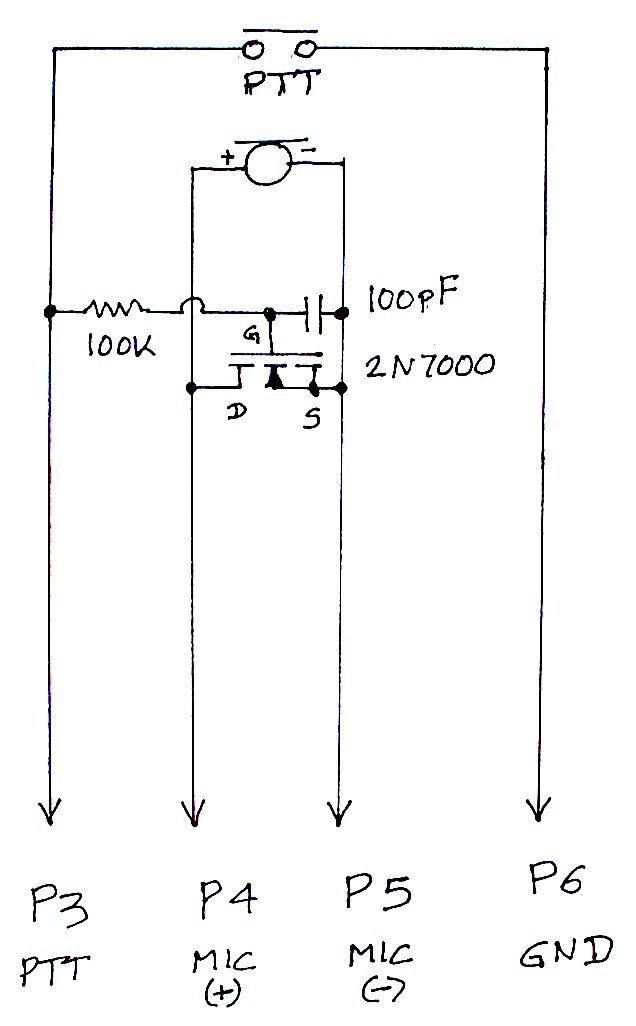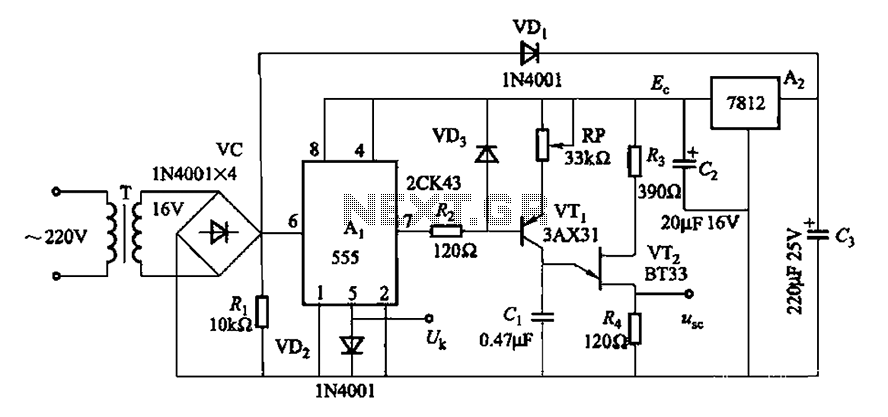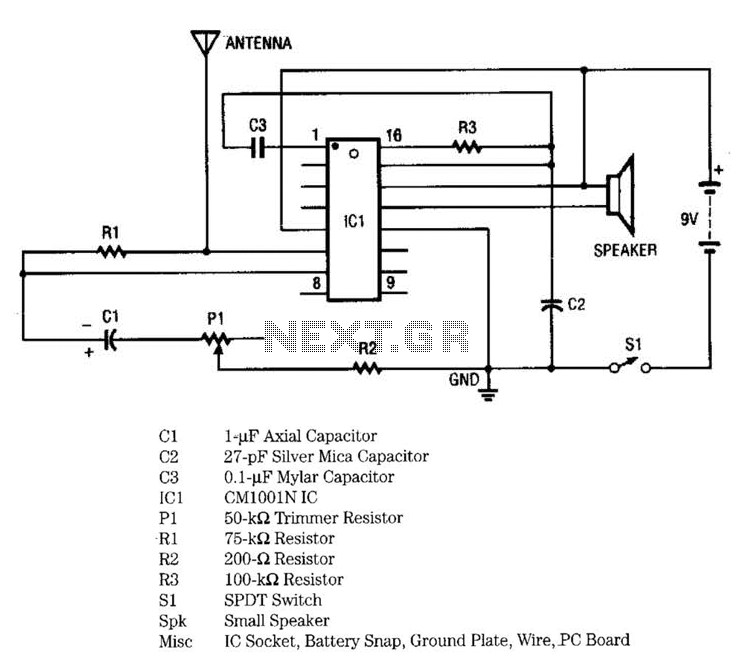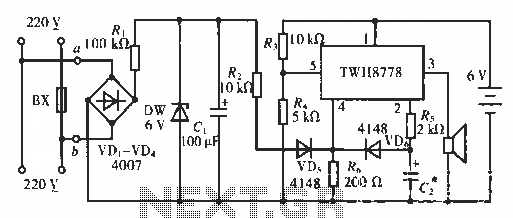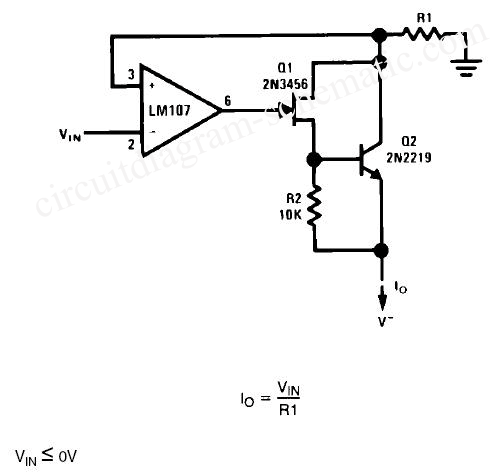
Metal Locator Circuit

The metal locator utilizes a one-transistor oscillator in conjunction with an AM radio to detect metal. Transistor Q1 is a PNP transistor connected to the oscillator circuit. Resistor R1 supplies the appropriate base bias, while capacitors C3 and C4, along with the search coil, establish the frequency of oscillation. Although capacitors C3 and C4 have fixed values, the search coil acts as an inductor with variable inductance, which alters the oscillator frequency as metal is brought near. The oscillator generates a frequency rich in harmonics, falling within the AM broadcast band. The metal detector operates by mixing its output with the local oscillator of the AM radio. The resulting output from the radio is a low-frequency audio tone that varies in pitch as metal is approached or removed from the search coil. In contrast, commercial metal detectors typically employ two oscillators, eliminating the need for an AM radio. This metal locator offers a cost-effective alternative to more expensive commercial metal detectors.
The metal locator circuit features a simple yet effective design, leveraging the properties of a single PNP transistor to create an oscillator that can detect the presence of metal. The oscillator circuit is primarily composed of the transistor Q1, which acts as the active component that generates oscillations. The biasing of the transistor is crucial for its operation, which is achieved through resistor R1. This resistor ensures that the transistor operates within its active region, allowing it to amplify the oscillating signals effectively.
Capacitors C3 and C4 play a significant role in determining the frequency of the oscillator. Their fixed capacitance values, in conjunction with the variable inductance of the search coil, allow for the modulation of the oscillation frequency. The search coil, being an inductor, changes its inductance based on the proximity of metallic objects. As metal approaches the coil, its inductance decreases, consequently increasing the frequency of the oscillations produced by the circuit. This frequency modulation results in a rich harmonic output that can be detected within the AM radio frequency range.
The integration of the metal locator's output with the AM radio's local oscillator creates an audio tone that can be easily perceived by the user. The audio tone's frequency varies, providing an audible indication of the presence of metal. When metal is brought near the search coil, the tone becomes higher in pitch, while moving the metal away lowers the tone. This auditory feedback allows users to effectively locate metal objects without the need for complex and expensive equipment.
While commercial metal detectors typically employ dual oscillator configurations to achieve similar functionality, this metal locator represents a simplified approach that remains accessible and affordable for hobbyists and casual users. The design's reliance on readily available components makes it an attractive option for those seeking to explore metal detection without significant investment. The metal locator uses a one-transistor oscillator and an AM radio to detect metal. Transistor Ql is a pnp transistor that is connected to an oscillator. Resistor Rl provides the correct base bias and capacitors C3 and 04 and the search coil determine the frequency of oscillation. Capacitors C3 and C4 are fixed in value, but the search coil is an inductor that varies in inductance (and thus varies the oscillator frequency) as metal is brought near it.
The oscillator frequency is rich in harmonics and its output falls within the AM broadcast band. The metal detector works by combining its output with the local oscillator of the AM radio. The resulting net output of the radio is a low- frequency audio tone that changesgets higher or loweras metal is brought near or taken away from the search coil. Commercial metal detectors use two oscillators, so they don`t require an AM radio. This metal locator provides an inexpensive alternative to an expensive commercial metal locator. 🔗 External reference
The metal locator circuit features a simple yet effective design, leveraging the properties of a single PNP transistor to create an oscillator that can detect the presence of metal. The oscillator circuit is primarily composed of the transistor Q1, which acts as the active component that generates oscillations. The biasing of the transistor is crucial for its operation, which is achieved through resistor R1. This resistor ensures that the transistor operates within its active region, allowing it to amplify the oscillating signals effectively.
Capacitors C3 and C4 play a significant role in determining the frequency of the oscillator. Their fixed capacitance values, in conjunction with the variable inductance of the search coil, allow for the modulation of the oscillation frequency. The search coil, being an inductor, changes its inductance based on the proximity of metallic objects. As metal approaches the coil, its inductance decreases, consequently increasing the frequency of the oscillations produced by the circuit. This frequency modulation results in a rich harmonic output that can be detected within the AM radio frequency range.
The integration of the metal locator's output with the AM radio's local oscillator creates an audio tone that can be easily perceived by the user. The audio tone's frequency varies, providing an audible indication of the presence of metal. When metal is brought near the search coil, the tone becomes higher in pitch, while moving the metal away lowers the tone. This auditory feedback allows users to effectively locate metal objects without the need for complex and expensive equipment.
While commercial metal detectors typically employ dual oscillator configurations to achieve similar functionality, this metal locator represents a simplified approach that remains accessible and affordable for hobbyists and casual users. The design's reliance on readily available components makes it an attractive option for those seeking to explore metal detection without significant investment. The metal locator uses a one-transistor oscillator and an AM radio to detect metal. Transistor Ql is a pnp transistor that is connected to an oscillator. Resistor Rl provides the correct base bias and capacitors C3 and 04 and the search coil determine the frequency of oscillation. Capacitors C3 and C4 are fixed in value, but the search coil is an inductor that varies in inductance (and thus varies the oscillator frequency) as metal is brought near it.
The oscillator frequency is rich in harmonics and its output falls within the AM broadcast band. The metal detector works by combining its output with the local oscillator of the AM radio. The resulting net output of the radio is a low- frequency audio tone that changesgets higher or loweras metal is brought near or taken away from the search coil. Commercial metal detectors use two oscillators, so they don`t require an AM radio. This metal locator provides an inexpensive alternative to an expensive commercial metal locator. 🔗 External reference
